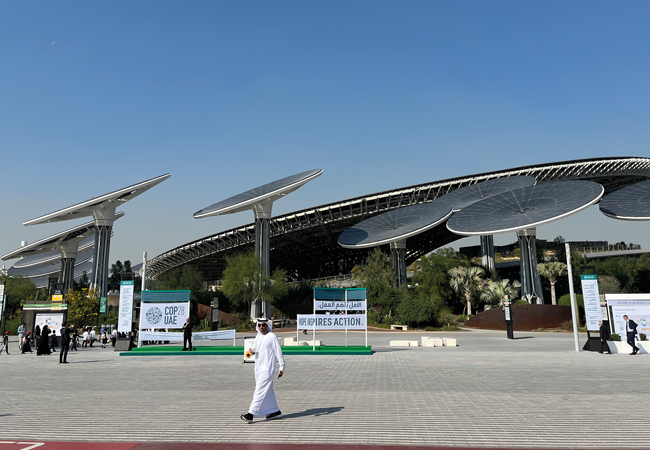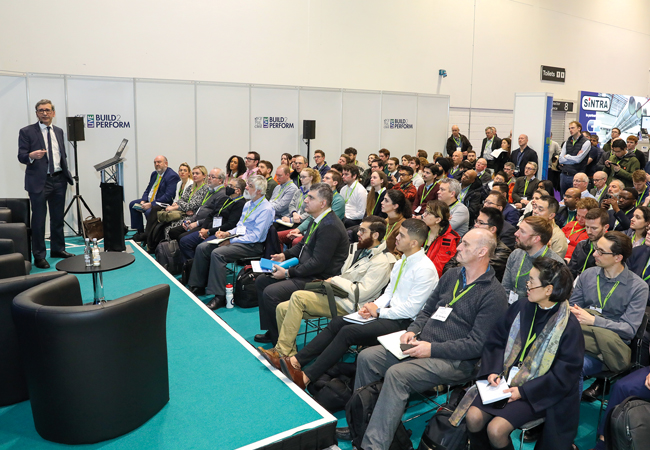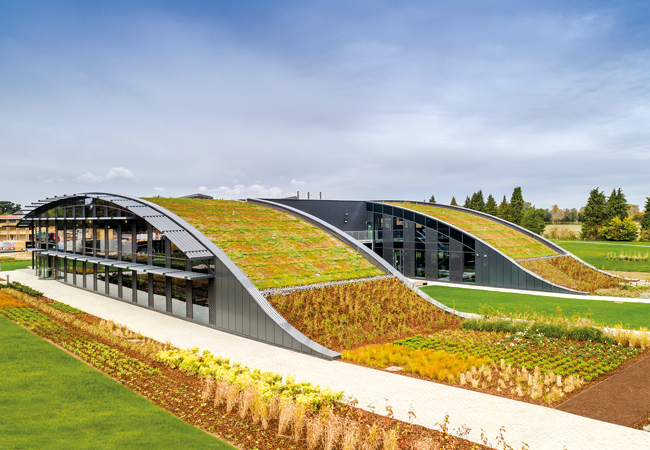
Credit: iStock.com / SolStock
A month after the UK government announced its net-zero target, we had the hottest day in the UK since records began. As the urgency of cutting carbon emissions rises up the industry agenda, so too should our response to the risks of hotter summers, wetter winters and extreme weather. What impact will net-zero and climate change have on schools across the country – and how can the sector best respond to these multiple challenges, as well as related environmental objectives, such as net biodiversity gain?
The CIBSE Schools Design Group on climate change adaptation was formed to share knowledge and promote good practice in adapting school buildings to future climate, with an initial focus on the risks of higher summer temperatures. In April 2019, a kick-off workshop – involving industry, academia and policymakers – was held to develop a joint view on the actions to be taken. Among the key issues highlighted were the need:
- For a collective understanding of how schools currently perform
- To build confidence in predicting performance under future climate scenarios
- For more guidance on current overheating risk assessments to achieve greater consistency and transparency when assessing thermal performance of schools
- To recognise that the existing school estate represents the biggest challenge for climate change mitigation and adaptation.
However, strategies developed for new schools should lead the way. From the workshop, two workstreams were established – one focused on modelling to test the performance of recent school designs under future climate scenarios, and the other on monitoring to gather data on how school buildings are performing.
Under the modelling workstream, a range of schools, delivered to meet current thermal comfort design standards – for example, the Building Bulletin 101 (BB101) overheating risk assessment methodology – were tested against two future climate scenarios.
With the support of CIBSE and the Met Office, weather files were selected that aimed to represent scenarios of 2°C and 4°C global warming above pre-industrial levels. These two scenarios align with how climate risks to the UK are assessed in the Climate Change Risk Assessment1
This, in turn, informs wider UK government policy, as detailed in the National Adaptation Programme2
Research cited in UKCP18 (the latest climate change projections for the UK3) cautioned that a global mean warming level of 2°C could be reached as early as the late 2020s without mitigation of climate change, with a risk that this level of warming could occur from around the late 2030s onwards, even under a low emissions trajectory. The modelling results highlight the potential risks of thermal discomfort in a changing climate.
A summary of the overheating test results for the range of schools is presented in Figure 1. This shows the proportion of classrooms that do not achieve target comfort criteria under the 2°C and 4°C global warming scenarios. With 2°C of global warming, the overall number of classrooms not achieving current standards for thermal comfort is low.
However, there are schools with substantial numbers of classrooms that do not meet the standards. The classrooms most at risk were found to be those with an increased exposure to solar gains – for example, south-facing, top-floor classrooms. Risks were higher in London and the south-east of England, with dense urban areas also representing an increased risk because of the urban heat island effect.
Conversely, there was some evidence that schools with higher standards of insulation and increased potential for ventilation in classrooms performed better. With 4°C global warming, the majority of classrooms do not achieve target comfort criteria.
Beyond modelling, post-occupancy data collection and monitoring of completed schools is essential to validate and improve modelling tools, and close possible performance gaps. Monitoring also lays robust foundations for any fine-tuning of controls, to ensure comfortable and low carbon buildings for users.
For energy, differences between modelling and actual outcomes – as well as their main causes – are by now well documented, notably through CarbonBuzz. Now evidence is emerging that there are also gaps between design expectations and actual outcomes for daylighting, summertime thermal comfort and some aspects of functionality.
Post-occupancy data collection and monitoring of completed schools is essential to improve modelling tools and close performance gaps
Despite some progress on post-occupancy monitoring in recent years, we urgently need evidence on the real performance of schools. Within the working group, everyone recognised the importance of sharing data, but few were able to hand over data, even in an anonymised format. It was clear that there is nervousness about releasing data, and, particularly, about acknowledging that some aspects may not perform as well as intended. More work is clearly required on how to reduce the perceived legal implications of sharing these studies.
Department for Education (DfE) contractors are required to carry out aftercare, with fine-tuning of services in the first year of operation (see case study below). Comprehensive seasonal commissioning is a key part of this, based on interrogations of BMS trends for system efficiencies, as well as meter readings.
With ambitions for new schools to move towards zero carbon, it is increasingly urgent that actual performance outcomes are tracked and each building is optimised to its potential. Findings need to inform new projects. Recent monitoring in schools using the cloud-based reporting platform K2n and iSERV methodology, and in those monitored by BAM, have shown that actual hot-water demand is lower than current benchmarks.
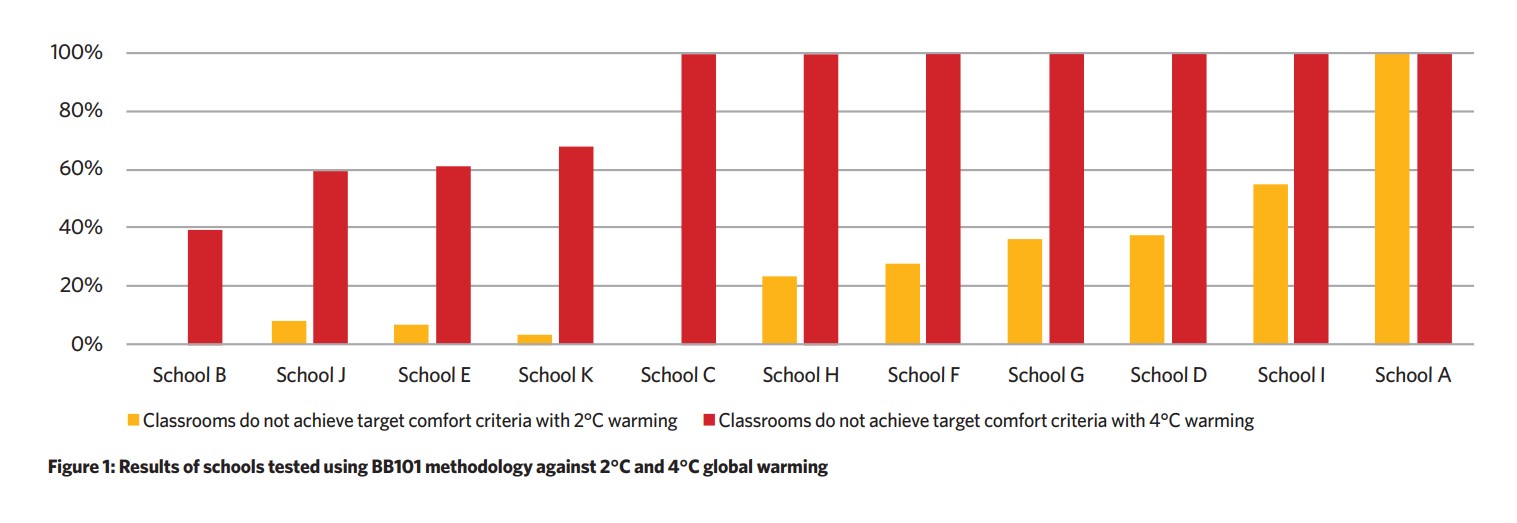
This finding is being considered by the Part L review and is significant, particularly given increasing opportunities for heat pumps, which are more efficient with lower hot-water loads.
Monitoring in recent schools by BAM also suggests that designs may overestimate heating requirements in internal corridor spaces for buildings that achieve good levels of fabric performance.
Closing the performance gap through effective building management and commissioning is an important first step towards future-proofing our schools against a changing climate. Other potential low- or no-cost measures include passive improvements to the building and its microclimate – for example, tree planting to increase shade – and changing user behaviours (flexible dress codes or school hours). These are the first steps in the ‘cooling hierarchy’ – further guidance is given in Annex 2F of the Output Specifcation4
The CIBSE schools working group will continue building the evidence base to inform industry guidance for climate change adaptation. Its next steps include further research into the risks of extreme weather and the life-cycle costs and benefits of climate resilience for UK school buildings. CJ
Tweaking the night-purge control strategy
Schools are a core market for contractor BAM, so a consistent understanding of the in-use performance of completed buildings is a real opportunity to identify efficiencies and improve the next generation of projects.
‘Night purging’ is a core part of low carbon strategies to prevent summer overheating. North Somerset Enterprise and Technology College, in Weston-Super-Mare, is a superblock with hybrid cross-ventilation in classrooms and a night-purge strategy through high-level secure vents in the atrium.
Temperature monitoring was undertaken by BAM during the school’s first summer as part of seasonal commissioning. Data confirmed that the night cooling was effective, reducing classroom temperatures across the building from 3am (under BMS control).
However, the monitoring revealed that the heating was coming on at 6am to heat rooms to the 19°C setpoint, thereby wasting energy and money, and undoing any free-cooling benefits. The case study highlights the value of seasonal commissioning to ensure good performance across the seasons, and shows the importance of integrating different systems in the controls strategy.
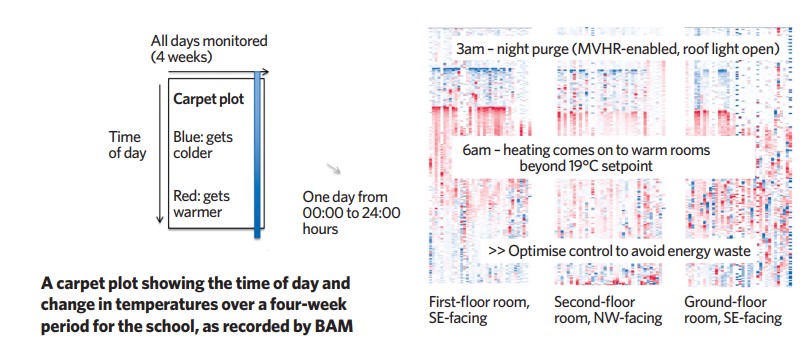
About the authors
Tim Taylor, Joe Jack Williams and Paula Morgenstern are from CIBSE School Design Group
References:
1 UK Climate Change Risk Assessment 2017 Evidence Report CJApr20TT2
2 Climate change: second national adaptation programme (2018-23), July 2018, Defra CJApr20TT3
3 UK Climate Projections (UKCP), CJApr20TT4
4 Output specification: generic design brief and technical annexes, June 2019, DfE, CJApr20TT5



